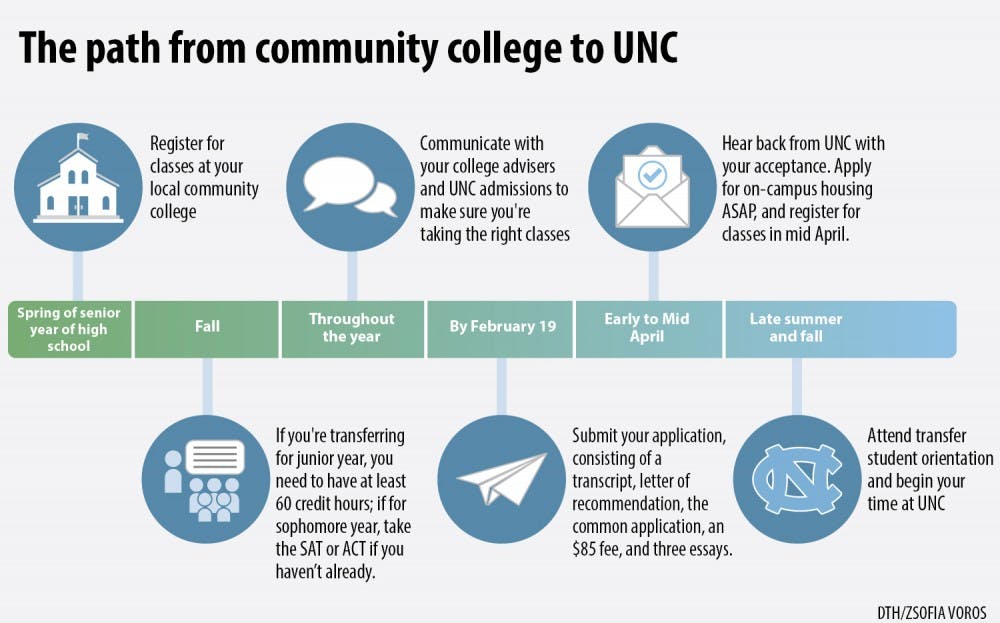For a student looking to save money or decide what to study before transferring, community college is an attractive option, with tuition being about a third of the cost of public, in-state four-year schools.
Ben Barrett, a policy analyst in the education policy program at the non-partisan, nonprofit think tank New America, said students are turning to community colleges because of a value shift in middle-class families as the costs of higher education rise.
“A lot of middle class families are feeling the squeeze,” he said.
Barrett said middle-class families are no longer emphasizing picking a four-year institution to go to straight out of high school and are looking to save money.
States are responding by increasing their investment in community colleges with the adoption of promise programs, where tuition and fees are fully covered for local high school students who meet specific requirements.
These programs make up for any gaps left once a student has received their federal student grants — making them attractive to middle-class students who may not be fully covered, Barrett said.
UNC has seen a small increase in transfer applications from community colleges, said Becky Egbert, senior assistant director of transfer admissions.
Egbert said UNC does not have plans to change its approach to recruiting transfer students based on the new trend.
Though 80 percent intend to transfer, few actually do
Community colleges offer students the chance to save money and experiment with what they want to study without committing to a large university — but that doesn’t come without a price.
The effects of the growing population of middle-class students at community colleges is twofold, Barrett said.
On one hand, these students generally have more financial resources and may lessen the burden on community colleges, he said. On the other hand, these institutions may start employing tactics to attract students.
To get the day's news and headlines in your inbox each morning, sign up for our email newsletters.
“We’ve seen instances where community colleges are trying to implement the trappings of a four-year university,” Barrett said. “Maybe they now have the gym on campus or are trying to bring in the aspects that middle-class students would enjoy otherwise.”
Community colleges have to continue to serve their mission as being accessible to any student, he said.
Researchers at Columbia University’s Community College Research Center highlighted that the transfer process could be improved for community colleges to fulfill their role in degree attainment.
In its 2015 report, the center found 80 percent of students at community colleges nationwide intend to transfer to a four-year university, but only 25 percent do so in five years.
Seventeen percent go on to earn their bachelor’s degree.
The disparity is due to loss of credits. Students who transferred between 2004 and 2009 lost about 40 percent of their credits, according to the U.S. Government Accountability Office. Faced with this, many transfer students get frustrated and some drop out.
Community colleges still have attractive features, Barrett said. Their ability to quickly change the curriculum in response to changes in the workforce is something four-year universities have to match if they want to draw students back in, he said.
‘I know my truth, and I know I worked hard’
Loss of credits combined with learning how to register for classes using a different system, meeting new people and registering for housing after other students have already taken spots create unique challenges for transfer students at UNC.
But most students who transfer wouldn’t have it any other way.
“I reestablished who I was as a student at community college,” said UNC senior Sarah Calire.
Calire is from New York. During her senior year of high school, she committed to play soccer for a university in Long Island. Two weeks before practice started, she decided collegiate soccer wasn’t for her and enrolled at Suffolk County Community College the same day.
Most people supported Calire’s decision.
“Some people will make their sly comments like, ‘Oh, it’s so easy to go to community college and transfer in,’” she said. “But I just brush those off because I know my truth, and I know I worked hard.”
While she was in community college, she lived with her parents and worked four jobs to save money.
During the transition to UNC, she met with advisers to make sure she would take the right classes and get her credits to transfer. Although not all of them did and registration was stressful, she was able to satisfy most of her general education requirements before starting her first semester.
She said she is very fortunate because she knows other transfer students aren’t as lucky.
Prospero also had a hard time during the transition but is now a senior at UNC majoring in economics. He said the rigor at UNC was very different compared to community college, where he had a 4.0 GPA.
“Coming to UNC has motivated me even more,” he said. “In community college I felt I was ahead of the game.”
Prospero said UNC was helpful during his transition, which made him want to come here.
“Other schools were being unhelpful or rude,” he said. “You could tell from the tone of their voice that they didn’t even want to talk to you. UNC was the complete opposite.”
Both Calire and Prospero said they wished they could have gone to a four-year college straight out of high school, but that community college helped them grow.
“It’s probably the best decision I made ever to go to community college,” Calire said.
@ampogarcic
state@dailytarheel.com
Anna PogarcicAnna Pogarcic is the editor-in-chief of The Daily Tar Heel. She is a senior at UNC-Chapel Hill studying journalism and history major.




